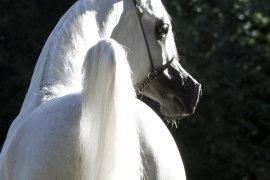Fodder is the basic food for horses, whatever the quantity. Colts start very early on to taste grass and hay, imitating their dam. So fodder is an irreplaceable food. But this term is used also for all types of grass, eaten fresh or preserved in some way – indeed sometimes fodder indicates any fibrous food. As our horse relies on us for a correct supply of food, it is always very useful to know the key characteristics of the various types of forage available.
Below is a short guide to the various types of fibrous foods that can be given to horses: grazing grass, hay, ensiled foodstuff, straw, molichaff, artificially dried grass, enriched forage and complete foods.
In addition to haymaking, there is also another way to dry up grass: cutting it up and expose it to a high temperature for a short time inside specific “drying-up” machines. The outcome is much better than hay (basically, it does not have many of the disadvantages involved in haymaking), with quality is similar to that of the grass prior to the drying process, it is often pelleted and of an intense green.
There are various types on the market, mainly coming from alfalfa, sometimes enriched with other products such as molasses. Usually, the grass that undergoes this treatment is sickled earlier than for typical stage of haymaking, therefore the nutritional value of this grass is higher already to start with. This is excellent food, expensive but with a stable composition for which we can draw the same conclusion as before: they shorten consumption times and require a total review of the food quantity. The cost is justified by the process, which is particularly expensive. This type of food are used in slightly smaller quantities compared to hay: for this reason, it is necessary to be careful with the global fibrousness of the dose, which could be excessively low.








